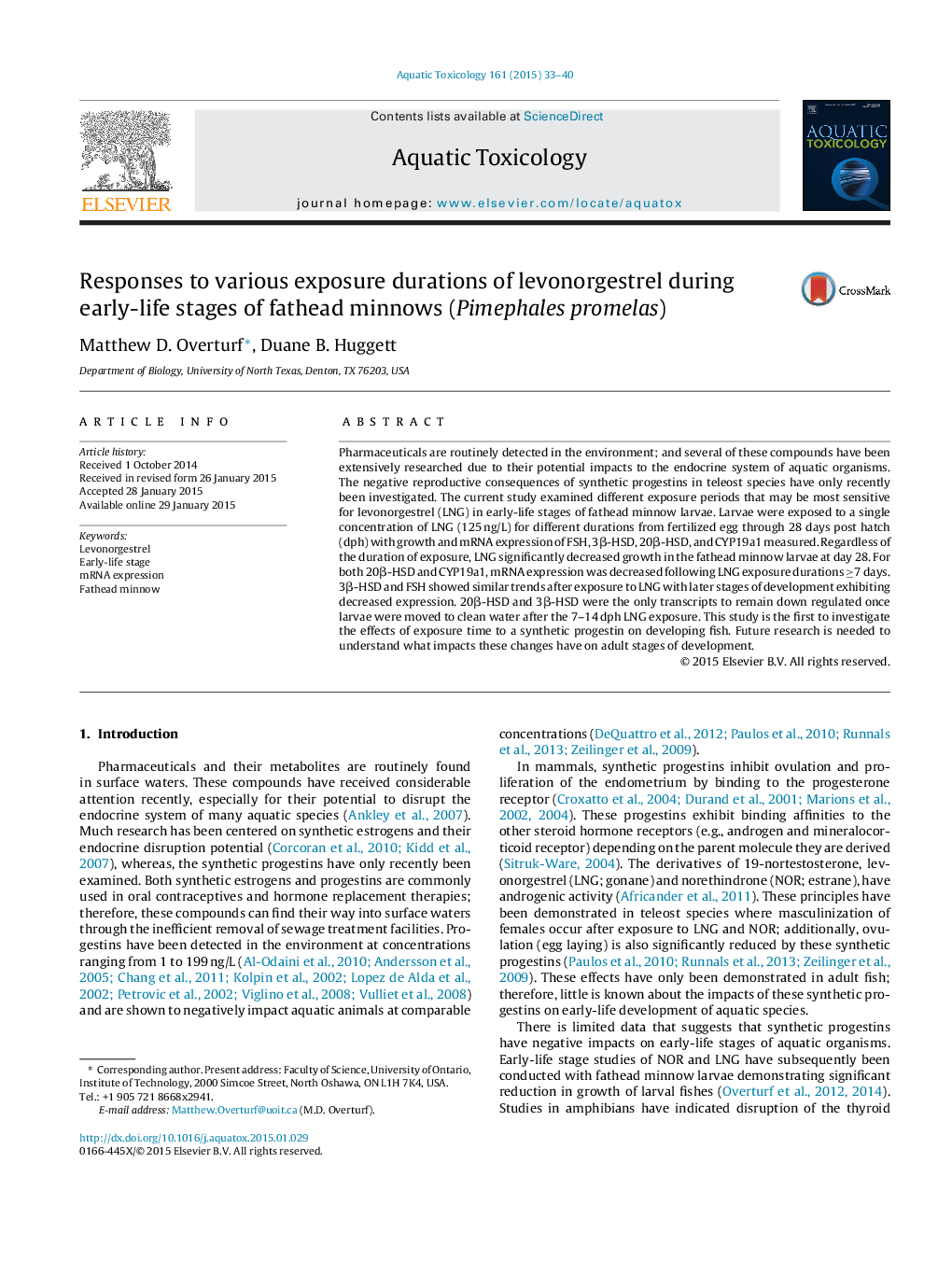| Article ID | Journal | Published Year | Pages | File Type |
|---|---|---|---|---|
| 6382185 | Aquatic Toxicology | 2015 | 8 Pages |
Abstract
Pharmaceuticals are routinely detected in the environment; and several of these compounds have been extensively researched due to their potential impacts to the endocrine system of aquatic organisms. The negative reproductive consequences of synthetic progestins in teleost species have only recently been investigated. The current study examined different exposure periods that may be most sensitive for levonorgestrel (LNG) in early-life stages of fathead minnow larvae. Larvae were exposed to a single concentration of LNG (125 ng/L) for different durations from fertilized egg through 28 days post hatch (dph) with growth and mRNA expression of FSH, 3β-HSD, 20β-HSD, and CYP19a1 measured. Regardless of the duration of exposure, LNG significantly decreased growth in the fathead minnow larvae at day 28. For both 20β-HSD and CYP19a1, mRNA expression was decreased following LNG exposure durations â¥7 days. 3β-HSD and FSH showed similar trends after exposure to LNG with later stages of development exhibiting decreased expression. 20β-HSD and 3β-HSD were the only transcripts to remain down regulated once larvae were moved to clean water after the 7-14 dph LNG exposure. This study is the first to investigate the effects of exposure time to a synthetic progestin on developing fish. Future research is needed to understand what impacts these changes have on adult stages of development.
Related Topics
Life Sciences
Agricultural and Biological Sciences
Aquatic Science
Authors
Matthew D. Overturf, Duane B. Huggett,
